You Win Some; You Lose Some.
Hopefully, the wins outnumber the losses. With my trial-and-error gardening technique, I never know what to expect. But that’s part of the fun!
We moved into a brand-new house in February. Our new home came with an empty, barren yard – no grass, trees, flowers, or bushes – just a few weeds and briars.
No problem. I thought it would be exciting to have a blank canvas to design my landscape. Finally, I could fulfill my dreams of creating a pollinator paradise. My garden would boast a diverse selection of native plants in all sizes, shapes, and colors with butterflies, bees, bats, birds, and beetles flittering, flying, buzzing, and crawling around exploring their new homes. In my mind’s eye, I could see it all.
Unfortunately, my balloon deflated a little bit when I couldn’t do any winter sowing before moving in.
Winter-sowing is planting seeds in covered containers to stay outside during the cold months, allowing them to acclimate to their surroundings and germinate when they are ready.
By the time we got the house organized, it was the end of April, so I could only plant a few annuals in my mini greenhouses – spring sowing instead of winter sowing. Still, I’ve been patient, and now, the seedlings are getting big enough to transplant.
My flower beds are almost ready, too. It’s good the seeds had a late start because I ran into delays getting the flower beds prepared.
The “pre-planted garden beds” that came with the house were filled with non-native ornamentals and even some nasty invasive nandina. Plus, there must have been eight inches of wood chips dyed an ugly dark black color piled around the plants. None of that stuff figured into my plans. Clearing out the unwanted junk took a couple of weeks of intensive digging, raking, shoveling, and hauling.
Then came the fun. In the smaller plot, I planted four tiny American beautyberries I’d discovered competing for space in the forest’s undergrowth. It was quite tedious teasing the little things out of the ground while keeping their threadlike roots intact. The volunteer shoots were also anchored to the parent plant’s creeping root stem or rhizome running horizontally underground. I cut the rhizome, leaving a couple of inches of the stalk on both sides of the delicate plant.
After transplanting the withering little things in my flower patch, I was afraid they would immediately shrivel up and die. However, between my loving words of encouragement and the garden gnomes’ magic, they survived and have now tripled in size.
I didn't want my struggling beautyberries to be lonely, so I surrounded them with an assortment of coneflowers, sages, and coreopsis I purchased at our Native Plant Society’s spring sale.
So far, so good. It’s been about a month, and everything is still alive and growing. Amazing!
With my confidence boosted by success in experiment number one, I transplanted a few wildflower seedlings from my spring-sown covered containers into the larger garden bed. It had been a while since I’d gathered the seeds from the roadside ditches last year, and it was so lovely to see the familiar plants again: swamp sunflowers, lance leaf coreopsis, bitter sneezeweed, daisy fleabane, and blue mistflower now have a new home in my converted pre-planted garden.
If you have a free subscription and want to read all my articles, please upgrade to a paid subscription.
The plants are so tiny, though. I probably should have waited for the seedlings to mature a few more weeks, but my patience only lasted so long. The cleaned-out, empty garden bed was crying out for attention. Hopefully, the little guys will continue growing despite my impulsiveness.
Last weekend, I visited a native plant nursery and went wild. I picked up a Black-eyed Susan and a couple of rattlesnake masters now residing with the sunflowers and coreopsis in garden number two. I also bought an Oconee azalea, some holly shrubs, and even an elderberry bush and a pomegranate tree. I have no idea where they will go, but we’ll figure something out.
The best part was all the succulents we got for free. The nursery owner was clearing out his greenhouse and giving away the plants he didn’t want. I’ve never had a succulent plant before and have no idea how to care for them, but that’s what YouTube is for. I know they are desert plants, not native, but hey, they were free! Something new and different to play with, right?
Meanwhile, I’m trying to figure out what to do in the yard. Instead of topsoil, the ground surrounding our home is rock-hard clay covered with sand. Even a posthole digger can’t penetrate more than a few inches. My new azalea, elderberry and holly bushes, and the pomegranate tree depend on me to give them a good home. So, it’s time to get creative and come up with a solution.
Being an eternal optimist, I implemented a way to avoid digging – raised beds. Last fall, I scrounged around and came across some heavily discounted raised beds. Actually, they were so cheap I bought three of them knowing they’d come in handy someday.
I placed a thick layer of cardboard and wood chips around and underneath the aluminum tubs to kill the weeds and grass and then filled them with logs, black woodchips, leaves, pine needles, and sticks.
This coming week, all that filler material will be topped off with a soil concoction composed of whatever I can obtain without spending a ton of money. A truckload of topsoil would be simpler but is prohibitively expensive.
A local landscaper will give me some dirt he needs to get rid of. Usually, he takes leftover leaves, grass clippings, etc. to the dump. What a shame! All that chopped-up vegetation makes lovely compost. Also, heaping yard debris in big piles at the landfill is an environmental disaster. The lack of airflow prevents the organic material from decomposing. Instead, it rots and produces methane, which is a definite no-no.
If the dirt needs nutrients, I’ll use compost, leaf mold, and maybe some potting soil to enrich it and mix in a bit of the ever-present sand to help with drainage. I’ve never tried anything like this before. Wish me luck with making and using my experimental topsoil.
Well, that’s my progress so far. It’ll take a while to make my pollinator paradise a reality. No big deal; I love a challenge.
Follow along to see if my homemade soil mixture works and if my native flowers, trees, and shrubs survive my trial-and-error gardening method.
You must admit that gardening would be boring if it were simple. We learn by doing. I won’t be too terribly disappointed if a few things don’t work. Sad, yes; give up, never. We win some and lose some. Hopefully, the wins will outnumber the losses. Until next week…
Happy gardening, everyone!
Let’s Get Our Hands Dirty is a reader-supported publication. If you’re able and want to support my work, please consider signing up as a free or paid subscriber. I’d greatly appreciate it! https://gretaburroughs.substack.com/subscribe


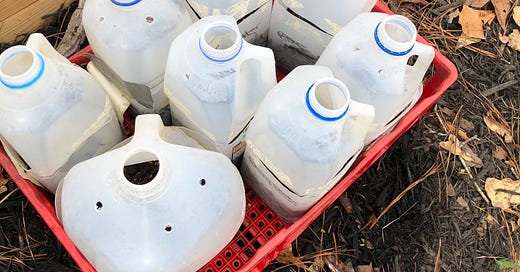



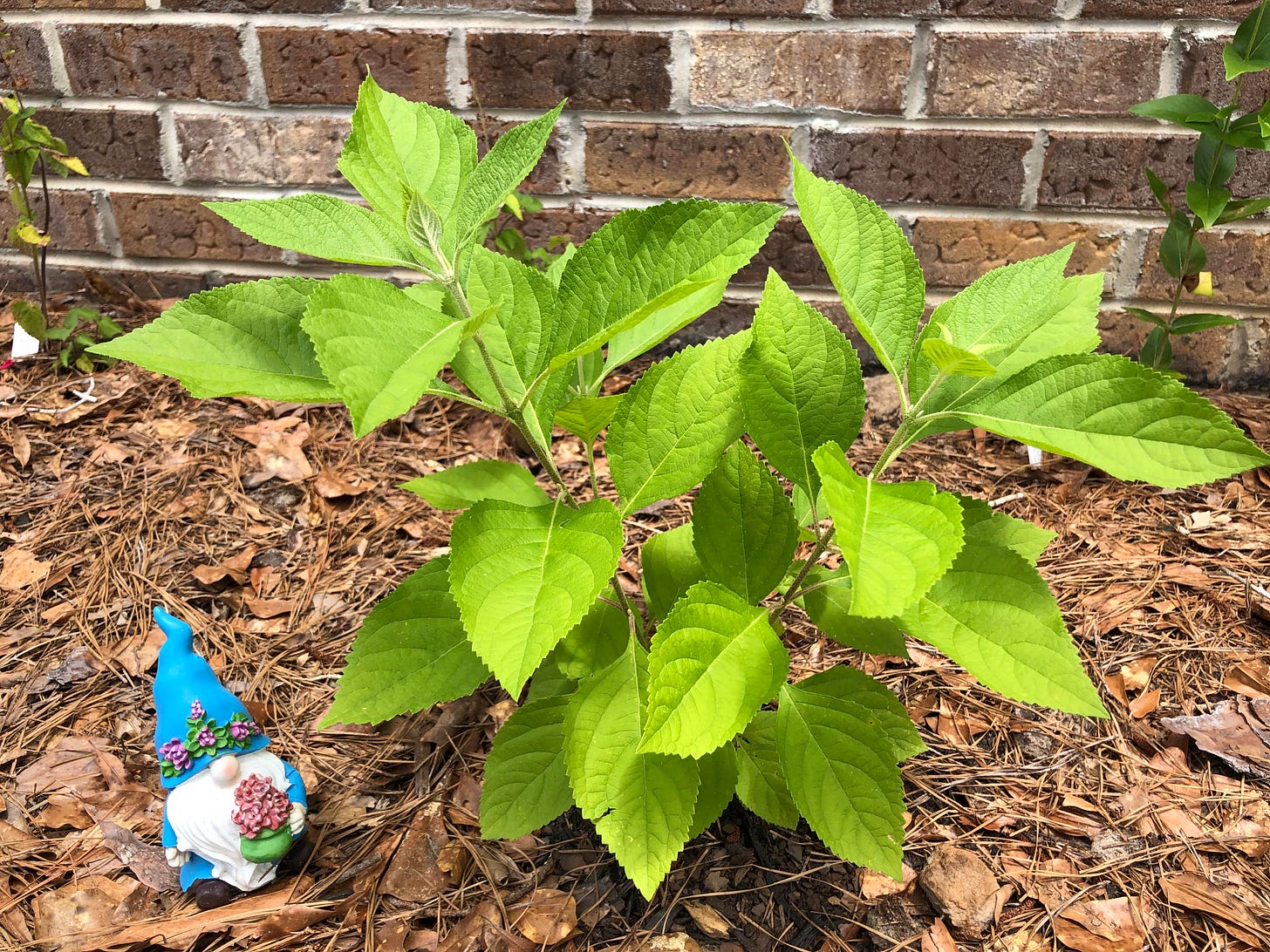
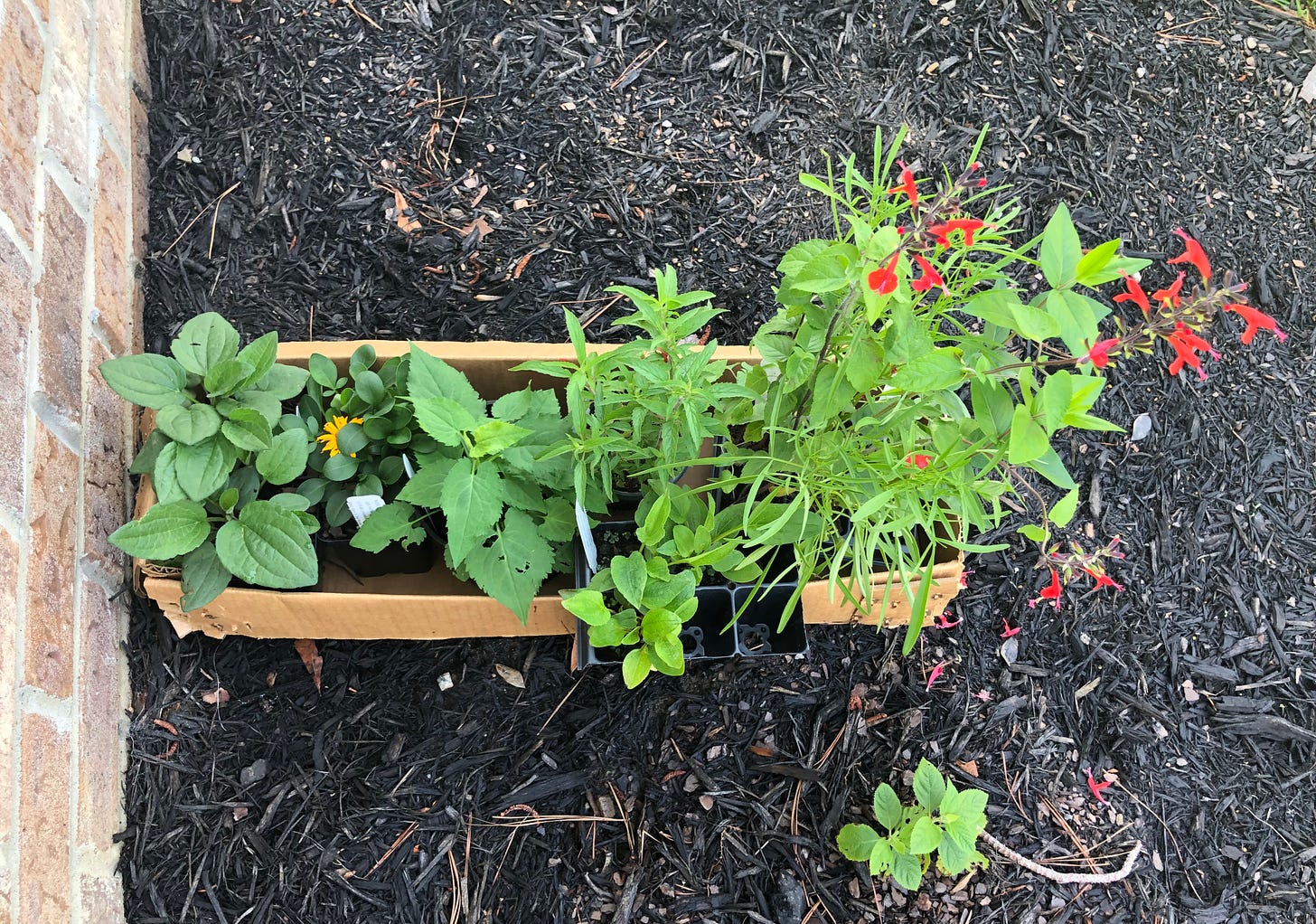
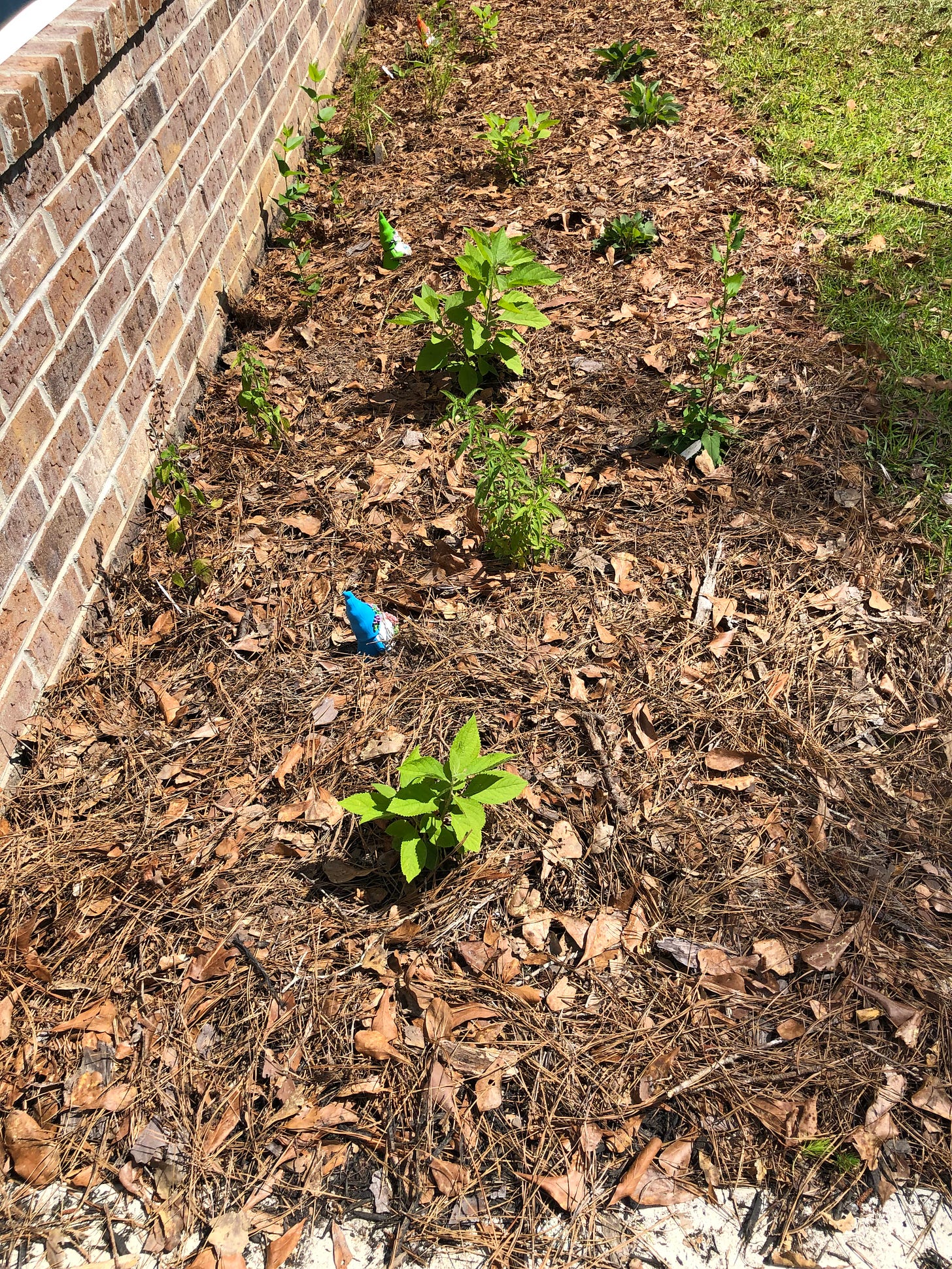
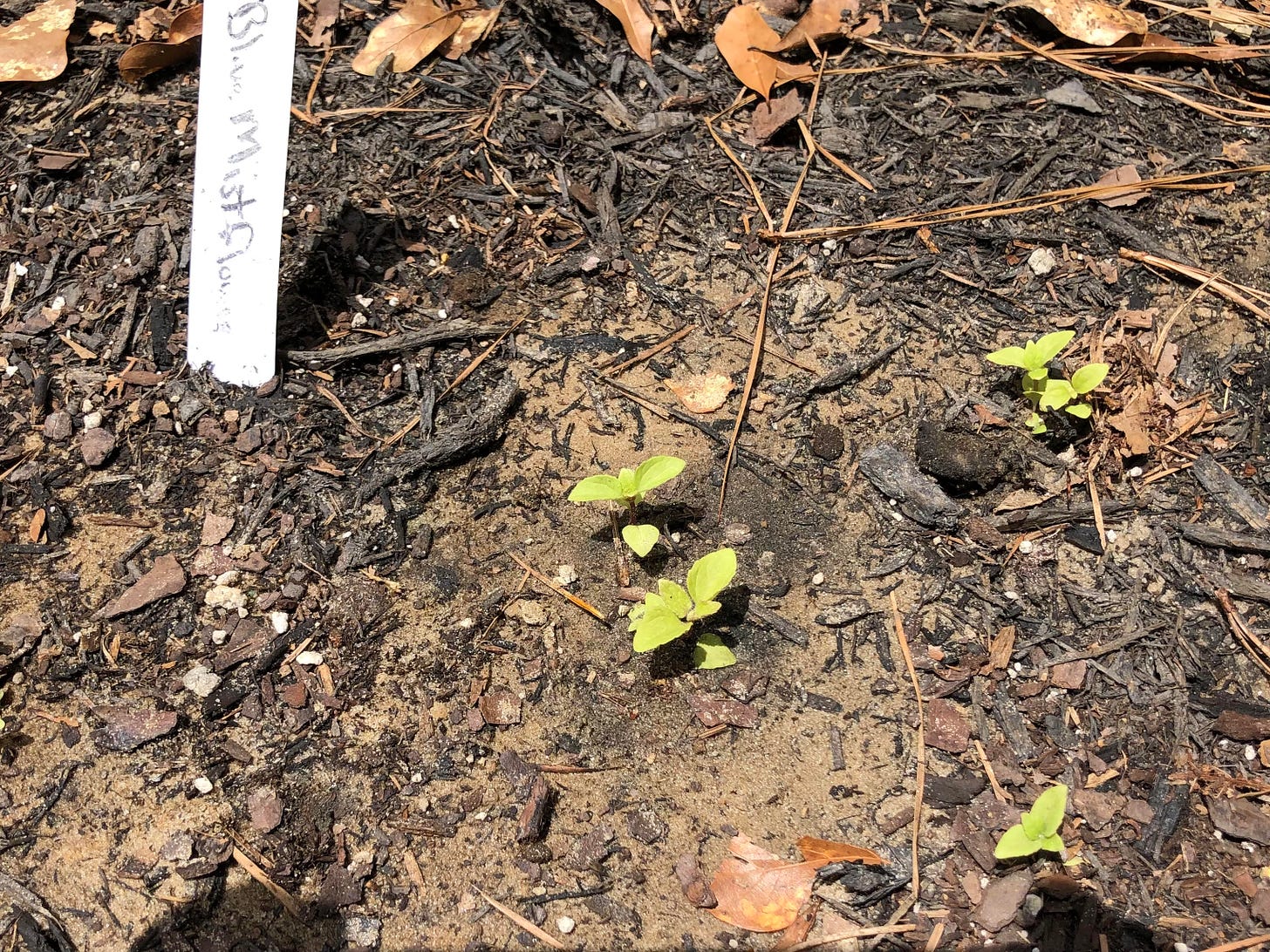
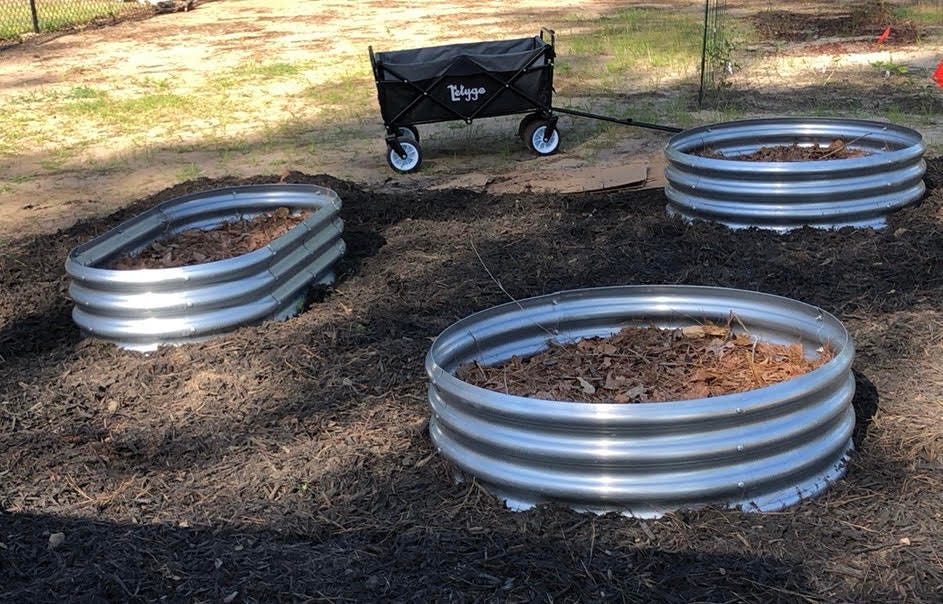
Wow, you've done wonders. Kudos.
Since I published this article, a thunderstorm turned garden #2 into a lake with seedlings doing the backstroke trying to escape the deluge.
I think Mother Nature is out to get me…